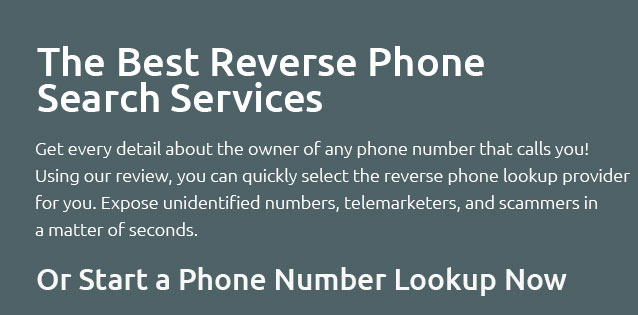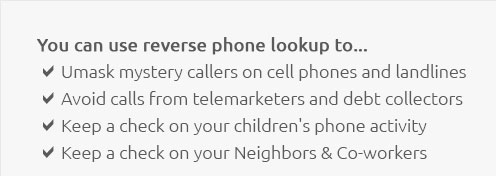 |
 |
|---|
 |
 |
|---|---|
|
|
 |
|
|---|---|
 |
|
 |
|
 |
 |
|---|---|
 |
|
The Intricacies of Reverse Call Lookup: A Step-by-Step ExplorationIn an era dominated by relentless technological advancement and ever-evolving communication methods, the concept of reverse call lookup has emerged as a crucial tool for individuals seeking to demystify unknown phone numbers. At its core, reverse call lookup empowers users by allowing them to trace the origins of incoming calls with remarkable ease. But what exactly is reverse call lookup, and why has it become such an indispensable tool for modern-day communication? Reverse call lookup, in essence, is a service that enables individuals to identify the owner of a phone number, providing details such as the caller's name, address, and sometimes even additional background information. This service has gained popularity due to the increasing prevalence of unwanted calls, ranging from telemarketers to potential scam attempts. The convenience of being able to identify a caller without having to answer the phone is undeniably appealing, especially in a world where privacy and security are paramount. At the heart of reverse call lookup is a vast database, meticulously compiled and constantly updated with information sourced from various public and private records. These databases serve as the backbone of the service, ensuring accuracy and reliability. When an individual inputs a phone number into a reverse call lookup tool, the system cross-references the number against its extensive repository, producing a detailed report in a matter of seconds. One of the most fascinating aspects of reverse call lookup is its accessibility. With a plethora of online platforms offering free and paid services, users can effortlessly access these tools from the comfort of their own homes. Free services often provide basic information, while premium options offer more comprehensive data, catering to diverse needs and preferences. However, it's essential to approach reverse call lookup with a discerning eye. While the benefits are numerous, there are certain pitfalls to be aware of. Privacy concerns, for instance, are a significant consideration. Some users may be uncomfortable with the idea of their personal information being readily accessible through these services. Additionally, the accuracy of the information can vary depending on the source and the frequency of database updates. For those new to reverse call lookup, the process is refreshingly straightforward. Begin by selecting a reputable service provider, ensuring they have positive reviews and a solid track record. Once a platform is chosen, simply enter the phone number in question into the designated search bar. Within moments, the service will generate a report, offering insights into the caller's identity and location.
In conclusion, reverse call lookup is a powerful tool that bridges the gap between technological advancement and personal security. By understanding its mechanics and leveraging its capabilities, individuals can navigate the complexities of modern communication with confidence. Whether you're screening potential spam calls or simply curious about an unknown number, reverse call lookup offers a practical solution that is as enlightening as it is empowering. https://www.quora.com/I-did-a-reverse-phone-number-search-on-someone-s-phone-number-The-results-came-back-with-no-name-associated-What-does-this-mean
If you've received a call from an unknown number or a number that displays as No Caller ID, be careful! Telemarketers and scammers often intentionally hide ... https://stackoverflow.com/questions/45175813/python-reverse-phone-lookup-with-twilio
I've been looking for a way to do reverse phone lookups with python. I know there are other ways but it would be great if I could do it in python. https://www.spydialer.com/
Spy Dialer is the newest, fastest, SNEAKIEST free reverse phone number lookup on the web. It works with mobile phones, landlines and email addresses.
|
|---|